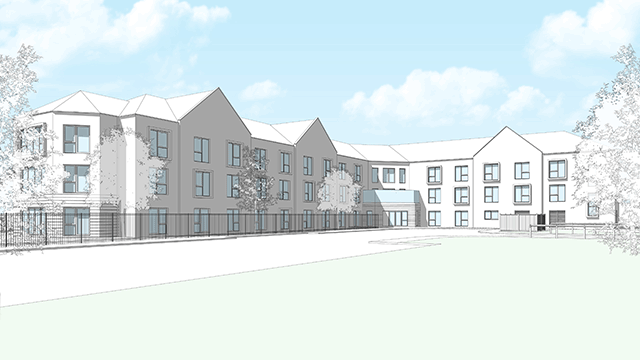Land adjacent to an offshoot of the Grand Union Canal may yet prove to be an ugly duckling, but at present there are few signs of the egg even hatching. Mark Simmons reports.
As long ago as 1982, Westminster city council, keen to protect the more genteel districts of Mayfair and St James’s from a City of London-like tower-block invasion, designated Paddington as a zone for new office development. This was formalised as the Paddington Special Policy Area in 1988 and now commands a whole chapter in Westminster’s UDP (see box). Two factors, in particular, have frustrated the planners’ best intentions: the recession and an unwillingness among occupiers to play ball.
The recession muffled the fanfare of the main two proposals for the area. British Waterways and Trafalgar House Properties hoped to regenerate the canal basin. But the partnership was not to last and eventually Trafalgar House bought out British Waterways’ share. The lone punt in the trawl for occupiers was then rocked by Kvaerner’s bid for Trafalgar House, when the developer prepared to throw its property interests overboard. Now, although the takeover bid was unsuccessful, Trafalgar House has yet to indicate what it will do with the site. Speculation continues as to whether some or all of the land will be sold off after all. In the meantime, the 111,480m2 (1.2m sq ft) of offices, 9,290m2 (100,000 sq ft) of retail and 230 homes that have outline planning consent are no closer to realisation than before.
Agents for the other major scheme, Bishopsbridge, are finding it difficult to persuade tenants to locate to the area. Grainhurst, the development vehicle jointly run by NFC and Regalian, has outline planning consent for 130,060m2 (1.4m sq ft) of offices, 3,716m2 (40,000 sq ft) of retail, 1,161m2 (12,500 sq ft) of light industrial space and 210 homes on the former Great Western Railway goods yard between the elevated A40(M) and Paddington station. Critics say that this distinctly urban setting does not compare favourably with the gentler surroundings of central Westminster.
Adam Heatherington of Weatherall Green & Smith, joint letting agent with Pepper Angliss & Yarwood, disagrees: “The locality isn’t that bad. Go beyond the motorway and you get to Little Venice where you can go for walks along the canal. People need a little imagination – with 5.5ha (13.5 acres) we can create an environment of its own.” He looks to another waterside location to justify his bullishness: “It’s a little bit like Docklands – nobody believed in it to start off with.” Heatherington is quick to list the advantages of the location: high-class housing nearby in Maida Vale, easy road access to the A40 and the railway transport hub centred on the mainline station. This raises the spectre of the seemingly shelved CrossRail project which was supposed to be a significant selling point for the area. Harvey Marshall, lead member of Westminster external relations committee, comments: “It is disappointing. It will mean far more road than than rail traffic.”
Heatherington refuses to be downhearted, however, and points to the arrival of Heathrow Express. The 16-minute direct rail link from Paddington to Heathrow airport is due for completion in 1998. “An annual throughput of 10m travellers – many of them business travellers – will throw up a lot of business opportunities,” he reckons.
Hotel and leisure facilities would seem logical. However, further hotel development is contrary to the UDP which, in section 4.11, states: “. . . new hotels would be detrimental to the surrounding residential areas, would not meet the city council’s land use priorities for the area and would be an inappropriate use of scarce land for development in the city.”
Paddington station itself, a Grade I listed building, is in the catalogue of Railtrack properties that may be sold off. Any potential purchaser will want to look carefully at the detailed planning brief for the area produced by Westminster city council last year. “The idea is to create a proper transport interchange and maximise development opportunities,” says council project manager for Paddington Graham King. In the meantime, the future ownership of the station remains uncertain.
Also awaiting a decision is a proposed extension to St Mary’s hospital, which would involve a new wing and a connected 88,255m2 (950,000 sq ft) office scheme which has outline planning consent. “At the end of the day,” says Hillier Parker’s Roger Sewell, which is advising the Special Trustees of St Mary’s Hospital, “the economic fundamentals have to be there. There’s no point in spending tens of millions of pounds if the market isn’t ready.” Weatherall Green & Smith is acting for North West Thames regional health authority.
Some agents claim that occupiers continue to express an interest in the area – a 46,450m2 (500,000 sq ft) requirement could go to Bishopsbridge – but they have yet to bite. The closest call so far was Banque Paribas, but last year it eventually plumped for space nearby at Marylebone Gate.
One of Paddington’s selling points is its large floorplates – up to 2,787m2 (30,000 sq ft) – which are extremely rare in the heart of the West End. Unfortunately, this type of occupier is equally rare. However, when one does appear, Paddington should have the flexibility to offer a completely bespoke building. Heatherington stresses: “It is an outline consent, we’re not tied to what we’ve got here. When people come along we can redesign the scheme to suit them. We will take on board whatever the end user wants.”
The chances of any speculative development remain slim. “Nobody is going to spec between 27,870 and 46,450m2 (300,000 and 500,000 sq ft) in a pioneering location,” admits Heatherington. Ironically, the designation of Paddington as a special policy area has also impeded any interim development, as section 4.4 of Westminster UDP states: “Small-scale applications will normally not be acceptable in the Paddington SPA because they could lead to piecemeal development and they are unlikely to achieve the city council’s objectives for the SPA.”
How long Westminster is prepared to tolerate lack of development remains an open question. Last year, Marshall threatened the developers with a compulsory purchase order if the council did not see signs of greater activity. He confirms that this option remains open: “We are entitled to use CPO in the interest of the city. If I can be persuaded that this is the case, it might well be recommended. My concern is that we will have Heathrow Express operating in to a desert – and that is quite unacceptable.”
Marshall reveals that he is negotiating with an operator to develop the whole Paddington area, in the event of a CPO. All is not doom and gloom, however. Marshall says: “I have had very fruitful discussions with David Goldstone [of Regalian] and I am confident it is doing its best to achieve a letting [at Bishopsbridge].”
Policy PSPA2
The city council will seek to ensure where appropriate that:
A The overall development of the area includes a significant proportion of residential and associated uses;
B The design and form and developments are of the highest quality;
C The existing amenity and future development of St Mary’s Hospital is safeguarded;
D The overall development includes additional or improved access to the canalside or the appropriate use of water;
E Buildings of character and their surroundings are enhanced;
F Provision is made for improved access to sites and other necessary improvements to the main road network;
G Provision is made for improved traffic flow which allows an increase in road capacity within the area while ensuring that there is no worsening of traffic conditions on local roads;
H Provision is made for adequate parking provision, in accordance with the standards in sections 10.19-10.22;
I Convenient pedestrian routes are provided through and within the area, including access for people with disabilities and improved linkages to residential areas;
J New or improved public transport infrastructure, where this is necessitated by the development and improved access to public transport services, is provided by each developer;
K The following benefits are attained:
i the provision of new or additional community, recreational or arts facilities;
ii the provision of small business accommodation made available by legal agreements for use by light industrial activities;
iii the provision of local shopping facilities;
iv water quality is protected and, where possible, improved.










